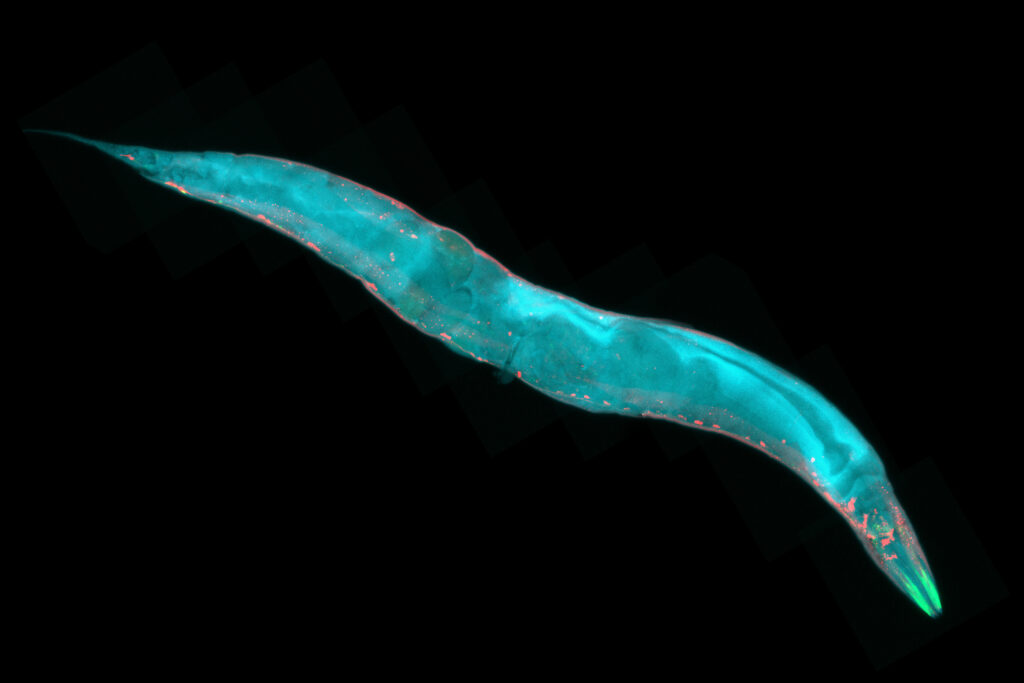If you could, would you enter a suspended metabolic state for the chance to reawaken 46,000 years from now, as you are today? For one nematode discovered in Siberian permafrost, the answer is a resounding “yes”. A study published in late July of this year details recent research that expands on a paper published in 2018 wherein scientists announced that they successfully reanimated a small but resilient nematode, or roundworm, who remained alive for tens of thousands of years in a state called cryptobiosis after being frozen in extreme Arctic soil conditions.

Cryptobiosis is a skill reserved for the few organisms (commonly known as extremophiles) who have adapted to survive hostile environments that are exceptionally hot, cold, dry or oxygen deficient. In this state, organisms scale back their metabolic processes until signs of life are virtually indetectable. Such organisms include, but are not limited to, certain bacterial species as well as tardigrades, rotifers and nematodes. In the most recent paper, researchers used radiocarbon dating of plant matter in the surrounding soil to demonstrate that the nematode in question likely entered cryptobiosis in the late Pleistocene era, roughly 46,000 years ago—sharing the planet with long-extinct species like the woolly mammoth. Scientists conducted an in-depth genomic and morphological phylogenetic analysis on descendants of the original worm, who has since died, to define this new species and identify the unique mechanisms that enabled the worm to survive. Their findings were published in PLOS Genetics in July 2023.
Researchers in the original study discovered the nematode in samples of Arctic permafrost extracted from 130 feet below the soil surface, in a Pleistocene rodent burrow left by Arctic gophers. Belonging to a female-only species that reproduces asexually, long-read sequencing of the species’ genome revealed that it is triploid, or possessing three chromosomal copies as opposed to two, posing something of a challenge for scientists in performing genome assembly. Despite this, researchers successfully conducted a multi-gene phylogenomic analysis, the results of which led them to believe that the worm represented a novel species. They named this species Panagrolaimus kolymaensis, after the Kolyma River in Siberia where the first worm was unearthed.
Seeking to pinpoint the adaptive abilities that supported the nematode’s prolonged survival, scientists compared her “molecular toolkit” with that of a similar nematode species, Caenorhabditis elegans, whose dauer larvae are known to survive extreme drying and freezing. In examining their genomes, researchers identified several shared characteristics that would likely contribute to P. kolymaensis’ remarkable ability to withstand harsh conditions, including enzymes needed for the tricarboxylic acid cycle, gluconeogenesis and the upregulated biosynthesis of a type of sugar called trehalose. Researchers were even able to induce cryptobiosis in both species, and demonstrated through further experiments that preconditioning of these worms by drying them out prior to freezing may enhance their long-term survival.
The study and its predecessor are not without skeptics—according to an article in Scientific American, some scientists question the true age of the nematode, arguing that the age of the adjacent plant material may not be a reliable indicator. Doubt was also cast on the mechanism by which researchers induced cryptobiosis, pointing out that preconditioning through drying would not represent natural conditions since nematodes require water.
Even so, the results of this study raise interesting questions about adaptive evolutionary processes and the potential revival of species that have gone extinct. Researchers also posited that the exploration of the molecular mechanisms required for cryptobiosis may inform new methods for the long-term storage of cells and tissues. Some have pointed to this study as further evidence that melting permafrost could represent a significant threat should pathogens also prove capable of surviving millennia in these conditions. Overall, this work may reveal key insights into the genetic equipment required for animals to adapt to extreme environments, an area of interest given the rapid progression of climate change.
Sources:
- A nematode survived 46,000 years in permafrost : NPR
- A novel nematode species from the Siberian permafrost shares adaptive mechanisms for cryptobiotic survival with C. elegans dauer larva | PLOS Genetics
- Nematode Resurrected By Scientists After Being Frozen For 46,000 Years—It Suggests Melting Permafrost Could Release New Disease-Causing Bacteria (forbes.com)
- 46,000-Year-Old Worm Possibly Revived from Siberian Permafrost – Scientific American
Related Posts
Latest posts by AnnaKay Kruger (see all)
- Elephants May Call Each Other By Name - July 16, 2024
- Studying Episodic Memory through Food-Caching Behavior in Birds - April 16, 2024
- A Silent Killer: Tracking the Spread of Xylella fastidiosa - March 27, 2024
